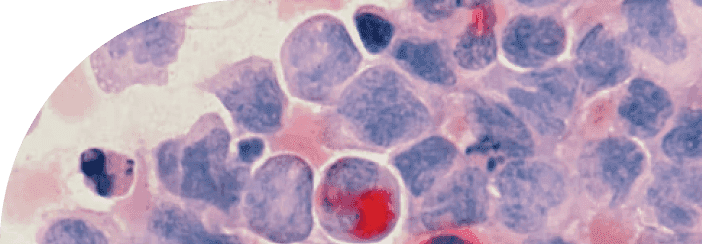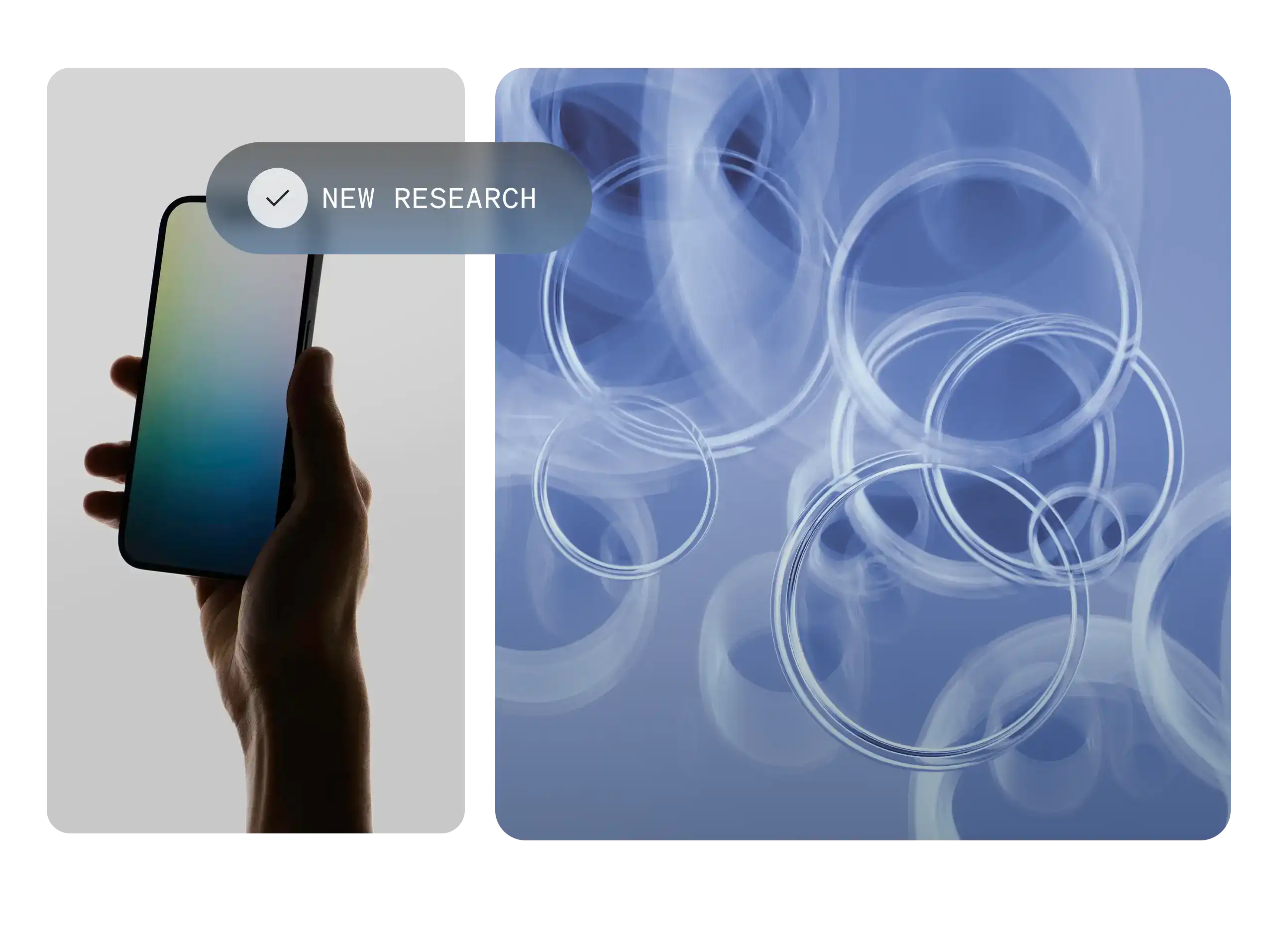.png?u=https%3A%2F%2Fimages.ctfassets.net%2Fzvzqa1d1gh0f%2F68YrPbjn5g7t8jFrx2OLuQ%2Fb206487615608c4585c6e309d8dd9567%2Flabs_2__1_.png&a=w%3D55%26h%3D55%26fm%3Dpng%26q%3D75&cd=2025-06-12T20%3A31%3A13.529Z)
Longevity Pro Panel
Longevity Pro Panel offers the most advanced holistic analysis of vital health systems, paving the way for a healthier, longer life.
Creatine is one of the most extensively researched and cost-effective supplements for enhancing anaerobic performance, yet its emerging role in brain health and neuroprotection is garnering increasing scientific interest. Beyond its well-established function in rapid ATP replenishment during high-intensity physical activity, creatine acts as an intracellular energy buffer and mitochondrial shuttle, reducing oxidative stress and supporting cellular resilience. This article explores the expanding evidence for creatine’s cognitive benefits across diverse populations—including vegetarians, older adults, and individuals under sleep or oxygen deprivation—and highlights promising findings in clinical contexts such as traumatic brain injury and neurodegenerative disease. By synthesizing mechanistic insights with randomized controlled trials, we present creatine not just as a performance enhancer, but as a potential therapeutic tool for supporting neurological function, healthy aging, and cellular energy homeostasis.
13 mins
By: Joseph Carzoli, PhD, CSCS
Creatine is among the most scientifically researched and validated sports nutrition supplements in the world. From increases in lean body mass, muscular strength, and sprint power, creatine supplementation is a simple addition to the arsenal of tools to improve physical performance. This is even more apparent given that a year’s supply of creatine is about $50. While creatine’s most studied function involves rapid energy replenishment in our cells, making it particularly helpful for anaerobic athletes, a growing body of evidence is revealing other cellular functions that suggest creatine supplementation may be worth considering for neuroprotective purposes. Beyond discovery of such functions, randomized controlled trials demonstrate cognitive benefits from creatine supplementation for a broad spectrum of neuro-typical and -atypical populations, making it worthy of consideration for anyone who wants improved neurological or muscular function.
Creatine quick facts:
There is overwhelming evidence of the anaerobic exercise (e.g., weightlifting, sprints, high-intensity interval training) performance benefits, body composition improvements, and increased rate of adaptation to training stimuli (get stronger faster) resulting from creatine supplementation [Kreider et al., 2017].
Creatine monohydrate is the most research validated, efficacious, and cheapest form of creatine to supplement with compared to creatine salt and ester variants. Other forms of creatine are often marketed to have increased bioavailability, and are, therefore, more expensive, but there is a lack of scientific evidence to support this claim. Creatine monohydrate is not degraded during digestion and nearly 99% is taken up by relevant tissues [Jager et al., 2011].
Supplementing with creatine does not suppress endogenous creatine synthesis [Kreider et al., 2003] as can happen with hormonal supplementation (e.g., testosterone).
Despite the healthcare industry’s long-held concerns of potential negative impacts on renal function, creatine supplementation is safe for healthy populations as well as children and adults with neurodegenerative diseases (e.g., Parkinson’s disease patients reported no adverse effects and renal function remained normal), even when supplementing with 30g/day (6x higher than typical dosing) for 5 years [Bender et al., 2008; Bender & Klopstock, 2016]. The most common side effect reported, while still rare, is gastrointestinal distress, but this could very well be from a “nocebo effect” (patients are told creatine may upset their stomach and are then more likely to feel an upset stomach).
While creatine is a natural component of skeletal muscle, creatine monohydrate supplements are synthesized in laboratories without any animal products, making them particularly helpful for vegans and vegetarians who naturally consume less creatine in their diets [Benton & Donohoe, 2011].
Accumulating evidence demonstrates a plethora of mechanisms through which creatine provides neuroprotective benefits for healthy and clinical populations [Forbes et al., 2022]
Creatine was first discovered as a component of skeletal muscle (attached to bones and enables bodily movement) in 1832. It is a naturally occurring, non-protein amino acid compound (not used to build cells) made of glycine, arginine, and methionine that is found primarily in red meat and seafood [Sahlin & Harris, 2011]. Roughly half of the body’s creatine is acquired from diet with the rest being synthesized primarily in the kidneys and liver [Paddon-Jones et al., 2004]. About 95% of bodily creatine is found in skeletal muscles with the remaining 5% residing in the brain and testes [Kreider & Jung, 2011].
This distribution is presumably due to the proportion of each type of tissue and high energy requirements of muscles, neurons, and spermatozoa. Around two thirds of intramuscular creatine is phosphocreatine (PCr), which is the form necessary for rapid energy replenishment via the enzyme creatine kinase. The remaining third is free creatine [Hultman et al. 1996], which is the form necessary to acquire a phosphoryl group.
That phosphoryl group can then be transferred to adenosine diphosphate (ADP) to create adenosine triphosphate (ATP), which is the energy currency of cells. The 2-to-1 PCr:free creatine ratio ensures that the ATP-PCr energy system can respond to cellular energy demands and do its job as an energy buffer. This energy system is modeled below:
ATP-Phosphocreatine energy system
The phosphoryl transfer above is the most time efficient replenishment of energy (ATP) in cellular metabolism [Meyer et al., 1984], making the ATP-PCr system the first line of defense against cellular energy depletion. ATP is constantly being consumed in muscle tissue—even at rest—and stores are limited. Without an efficient mechanism for replenishment, energy-intensive actions like sprinting or weightlifting would deplete ATP within seconds. That’s where the ATP-PCr system comes in: it’s the body’s first responder to sudden energy demands. Think of it as a chemical flywheel, spinning up to meet a spike in energy needs before longer-term systems kick in.
As such, the ATP-PCr system is critical for tasks requiring a lot of energy in a short amount of time, such as explosive sports, but its capacity lasts only up to about 10 seconds of work. After that, the body must rely on slower energy pathways: anaerobic glycolysis, which breaks down glucose without oxygen and lasts a few minutes, and oxidative phosphorylation, a slower, oxygen-dependent system that can produce ATP indefinitely but ramps up more gradually.
Supplementing with creatine (~5g/day, ~5-10g/day for larger athletes [Kreider et al., 2003]) increases the total amount of phosphocreatine available in our cells, which increases the total capacity of our cells to rapidly replenish energy during times of high energy demand. As a result, creatine supplementation has been widely tested in a myriad of athletes and consistently shown to improve performance in tests of strength and power. After all, the quicker your muscles can restock ATP, the quicker they can contract, and the stronger you are. After about 30 seconds of rest from a high-energy task, such as a sprint or lifting weights, around 70% of PCr stores are replenished, preparing you for the next bout of high-intensity effort.
While the benefits of the rapid energy replenishment provided by PCr are obvious enough, there are many other helpful functions of creatine in our cells. Inside cells, it acts as a molecular shuttle, linking mitochondria with the areas of high energy demand in the cytosol. Here's how that works: after mitochondria generate ATP through oxidative phosphorylation, a portion of that ATP is used to regenerate PCr with the help of mitochondrial creatine kinase. This PCr then exits the mitochondria and diffuses into the cytosol, where it can once again donate a phosphate group to ADP, regenerating ATP precisely where it’s needed [Hersch et al., 2006].
In this way, creatine serves as an energy distribution system, not just a buffer. This further connects mitochondrial sites of energy production with cytosolic sites of energy consumption. On top of that, PCr replenishes ATP within the mitochondria, reducing the demand for oxidative phosphorylation (high-yield energy creation that has a harmful byproduct of reactive oxygen species) and lowering reactive oxygen species generation. That matters because oxidative phosphorylation—while highly efficient—generates reactive oxygen species (ROS) as a byproduct. These molecules, when produced in excess, can damage DNA, proteins, and cell membranes. [Meyer et al., 2006].
These antioxidant capacities of creatine may be further bolstered by evidence from rodent models, where creatine has been shown to directly combine with and remove reactive oxygen species [Sestili et al., 2006] (it’s nearly impossible to recreate this finding in humans for ethical reasons). High amounts of reactive oxygen species accumulation within a cell can trigger apoptosis, or cell death [Rahimi, 2011], which makes creatine critical for the longevity of all types of cells with high energy demands, including neurons.
Creatine deficiency syndromes are characterized by mental and developmental disorders, such as learning delays and seizures [Mercimek-Andrews & Salomons, 2015]. These symptoms are at least partially reversed by creatine supplementation [Salomons et al., 2003], underscoring the immense role creatine plays in proper brain functioning. In older adults (76.4 + 8.48 years), supplementing with 20g/day for just 7 days improved both short-term (forward number recall) and long-term memory [McMorris et al., 2007a] compared to placebo. In fact, creatine supplementation has been shown to improve cognitive performance in the following relatively short list of populations tested in double-blind, placebo-controlled trials (see Table 1 for study details):
healthy older adults [McMorris et al., 2007a]
healthy younger adults [Watanabe et al., 2002; Ling et al., 2009]
vegans & vegetarians [Rae et al., 2003; Benton & Donohoe, 2011]
sleep deprived [McMorris et al., 2006; McMorris et al., 2007b]
oxygen deprived [Turner et al., 2015]
Table 1. Studies demonstrating improved cognitive performance from creatine supplementation
Most of the trials reporting cognitive or neurological benefits from creatine used 8 grams per day for at least five days, or the more common 20 grams per day loading protocol for a similar duration. Others used 5 grams daily for a minimum of two weeks—enough time for cellular saturation.
Understanding these dosing protocols is crucial when interpreting why some studies have not found creatine supplementation to improve cognitive performance. For example, Watanabe et al. (2002) observed improved serial calculation task performance from supplementing 8g creatine/day for 5 days in young, healthy subjects, while Rawson et al. (2008) did not observe improved performance in a myriad of cognitive tasks in this same demographic. The key difference is that the latter study supplemented 0.03g/day/kg bodyweight for 6 weeks [Rawson et al., 2008], ensuring their research participants likely never saturated their cells with creatine. Under this protocol, an individual weighing 80kg (~176lbs) would receive only 2.4g of creatine per day, which is less than half the recommended daily dosage of 5g.
So long as a sufficient creatine dosing protocol is achieved, all populations receive a clear benefit from the improved cellular energetics within the brain provided by creatine supplementation.
In populations where energetic failure is more pronounced—such as in neurodegenerative disease—creatine’s impact becomes more apparent. This may be why patients with Huntington’s disease were observed to have slower brain atrophy when supplementing with creatine [Bender & Klopstock, 2016] (although clinical markers were unchanged) since more energy available in the brain, which consumes about 20% of the body’s energy [Gualano et al., 2009], limits neuronal death. The proposed mechanism is simple yet powerful: more creatine means more energy buffering in neurons, which may help stave off cell death.
Another potential mechanism through which we may receive neurological benefits from creatine supplementation is revealed by data from rodent models. Researchers discovered that creatine was released from neurons in response to electrical stimulation, a behavior typically associated with neurotransmitters, suggesting that creatine may have neuromodulatory effects [Almeida et al., 2006]. This raises the possibility that creatine may act as a neuromodulator, influencing brain signaling in ways we’re only beginning to understand.While a promising start to a potential pathway through which creatine may augment neurological function, more evidence is needed in humans to explore how this may be able to help certain clinical populations.
One such clinical population for which we have limited, but promising, research findings of the benefits of creatine supplementation is individuals with traumatic brain injuries (TBI). Following a TBI, the brain enters a chaotic state of initial hypermetabolism followed by delayed hypometabolism. This sequence reflects a dramatic and destabilizing shift in how brain cells generate and use energy. The initial injury disrupts neuronal membranes and stretches axons, the long fibers that neurons use to send signals. As a result, ions like calcium and sodium rush uncontrollably across membranes, derailing neural communication and consuming large amounts of ATP in the process [Barkhoudarian et al., 2016].
Compounding the damage, cerebral blood flow is often impaired—making it harder for oxygen and nutrients to reach the injured tissue and for waste products to be cleared [Wang et al., 2021]. These combined effects lead to what researchers call an energy crisis in the brain: skyrocketing demand and plummeting supply [Giza & Hovda, 2014].
Amid this metabolic collapse, researchers have observed that creatine levels in the brain fall following TBI, suggesting a critical shortfall in the brain’s ability to buffer ATP [Signoretti et al., 2010]. This observation has led scientists to explore whether supplemental creatine could restore some balance to the damaged energy landscape.
Relative to muscles, creatine uptake in the brain is quite low because of the low permeability of the blood-brain barrier. Therefore, while creatine is typically dosed at ~5g/day for ergogenic goals, higher doses for longer periods of time (see Table 1) may be necessary for more robust cognitive benefits [Forbes et al., 2022].
Because the benefits of creatine supplementation come once muscles or neurons are saturated, consumption of creatine is not time sensitive so long as it is dosed daily. Effectively, the creatine you take today helps you next week, so you can consume creatine any time each day and get the benefits. Some research demonstrates greater intramuscular creatine levels when creatine monohydrate is ingested in combination with exercise [Harris et al., 1992], insulin [Steenge et al., 1998], carbohydrate [Green et al., 1996], and carbohydrate and protein [Steenge et al., 2000], potentially due to insulin-mediated increases in muscle creatine transport. However, these simply appear to help reach saturated levels slightly faster, so they are not critical in the long run. Similarly, a common recommendation is to do a “loading phase” of 20g/day of creatine monohydrate for 5 days, followed by 5g/day thereafter. This helps saturate muscles with creatine sooner than starting off with and maintaining 5g/day (consuming more creatine means more gets to your muscles and neurons), which allows one to receive the benefits of creatine supplementation sooner. Either way, saturated levels are reached from sufficient daily creatine monohydrate supplementation (≥5g) by about 2-3 weeks at the latest.
Creatine is among the most research-validated, effective, affordable, and safest ergogenic nutrition supplements in the world. It has been found to help a myriad of populations, not just improve physical performance and body composition, but cognitive performance as well. These benefits may be even more robust for populations who naturally consume less creatine in their diets, such as vegans, vegetarians, and older adults. Notably, the evidence for neuroprotective properties of creatine is growing, suggesting greater benefits from longer supplementation durations that may benefit the natural aging process. For years, there had been many misconceptions about the effects and perceived dangers of creatine in the fitness industry, but decades of research consistently demonstrating physical and cognitive performance benefits coinciding with practically no adverse health effects has changed that narrative. While it is standard practice to say something to the effect of “more research is needed,” it appears more research will likely continue the trend of revealing more and more health benefits from creatine supplementation.
TAKE HOME POINTS
Creatine Is a Proven Ergogenic Aid with Unmatched Scientific Validation. Creatine monohydrate is one of the most researched sports supplements, consistently shown to improve anaerobic performance, muscular strength, sprint power, and lean body mass. Its safety profile is robust, even at high doses and across clinical populations, and its affordability makes it one of the most accessible evidence-based tools in sports nutrition.
The ATP-PCr System Is the Body’s Fastest Energy Reserve. Creatine plays a pivotal role in buffering cellular energy by rapidly regenerating ATP through the phosphocreatine (PCr) system. This makes it essential for short, explosive efforts like lifting or sprinting, where it serves as a metabolic first responder—sustaining energy for up to 10 seconds before slower energy systems activate.
Creatine Supports Mitochondrial Function and Reduces Oxidative Stress. Inside cells, creatine acts as a shuttle, transporting high-energy phosphate groups between mitochondria and energy-demanding sites. This buffering function not only supports ATP regeneration but also reduces reliance on oxidative phosphorylation, limiting the production of damaging reactive oxygen species (ROS) and preserving cellular integrity.
Cognitive Benefits Span Healthy and Clinical Populations. Double-blind, placebo-controlled trials show that creatine supplementation improves memory, executive function, and reaction time across diverse groups—including healthy older adults, vegetarians, sleep-deprived individuals, and those under hypoxic stress. These benefits are likely mediated by enhanced energy availability in brain regions with high ATP demand.
Dosing Protocols Determine Effectiveness—Especially for Cognitive Outcomes. Studies that failed to find cognitive improvements often used subtherapeutic doses. A minimum of 5g/day—or a loading phase of 20g/day for 5–7 days—is typically required to saturate brain and muscle tissues. Underdosing may leave intracellular creatine levels below the threshold for functional benefits.
Creatine May Offer Neuroprotection in Neurodegenerative and Traumatic Injury. Supplementation has shown potential to slow brain atrophy in Huntington’s disease and improve cognitive, emotional, and behavioral outcomes in adolescents with traumatic brain injury (TBI). Its ability to buffer ATP, support mitochondrial stability, and reduce ROS may help limit neuronal death in energy-starved brain tissue.
Emerging Evidence Suggests Neuromodulatory Roles for Creatine. Rodent studies have revealed that neurons can release creatine in response to electrical stimulation—similar to neurotransmitters—suggesting a possible neuromodulatory function. While human data is limited, this mechanism may offer a new avenue for understanding how creatine influences cognition and brain signaling.
Higher or Prolonged Dosing May Be Needed for Brain Benefits. Unlike muscle, the brain has limited creatine uptake due to the low permeability of the blood-brain barrier. As a result, standard dosing protocols (~5g/day) may be sufficient for physical performance but suboptimal for neurological effects. Studies showing cognitive benefits often use higher doses (8–20g/day) for 5–7 days or sustained dosing over several weeks. Achieving saturation in neural tissue likely requires longer or more aggressive protocols, particularly in clinical or aging populations where energy deficits are more pronounced.
Latest Longevity Research Straight to your Inbox
Sign up for The Longevity Blueprint, a weekly newsletter from Healthspan analyzing the latest longevity research.
Sign up for The Longevity Blueprint, a weekly newsletter from Healthspan analyzing the latest longevity research.







